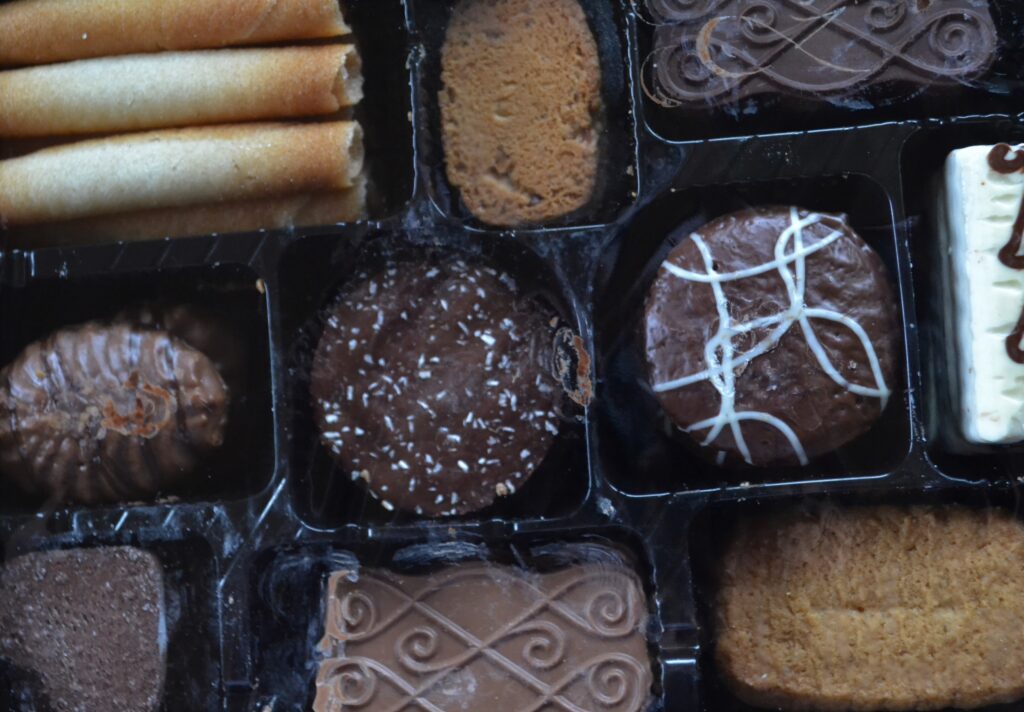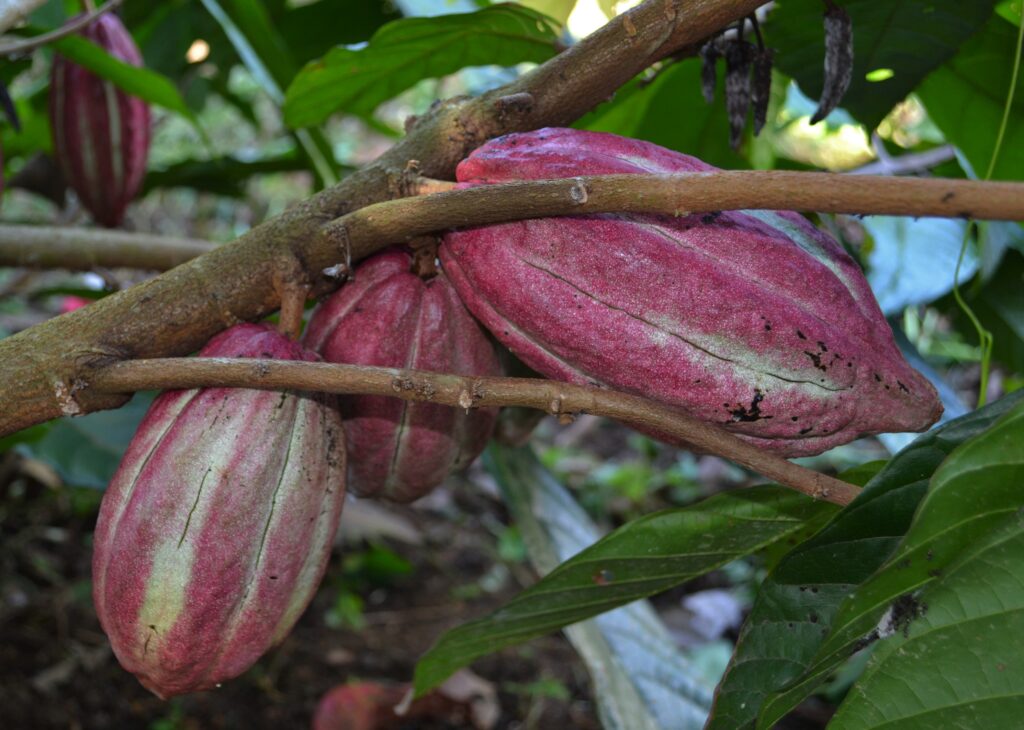Text and Photos by Henrylito D. Tacio
Remember the most-often quote line of Tom Hanks in the Academy Award-winning movie, Forrest Gump? “Life is like a box of chocolates. You never know what you’re gonna get,” said the man with a low IQ. Well, most chocolate aficionados seem to agree.
“There is nothing better than a friend,” Linda Grayson states, “unless it is a friend with chocolate.” Four-time Oscar winner Katharine Hepburn also said, “What you see before you, my friend, is the result of a lifetime of chocolate.”
What would be heaven without chocolates? “If there’s no chocolate in heaven, I’m not going,” wrote Jane Seabrook in Furry Logic Laugh at Life. That’s why people who may not have eaten chocolate see life in tragedy. “The greatest tragedies were written by the Greeks and Shakespeare… neither knew chocolate.”
Do you fight with your girlfriend? Then, give her chocolates. As Rachel Vincent wrote in My Soul to Save, “Chocolate says ‘I’m sorry’ so much better than words.” Or, as Jo Brand puts it: “Anything is good if it’s made of chocolate.”
Chemically speaking, “chocolate really is the world’s perfect food,” to quote Michael Levine’s words, the author of The Emperors of Chocolate. As Geronimo Piperni puts it: “Chocolate is a divine, celestial drink, the sweat of the stars, the vital seed, divine nectar, the drink of the gods, panacea and universal medicine.”

A bit of history
To think, chocolate is not a modern invention. In fact, for most of its 3,500-year history, it was not meant to be eaten but rather consumed as a beverage. In the Yucatan regions of Central America, where cacao – that’s where chocolates come from – was first cultivated, people used the product by grinding the beans and then mixing with water.
On his fourth voyage to the New World, Christopher Columbus took possession of a Mayan trading vessel containing what he thought of being made from almonds and functioned as a means of monetary exchange for the Native Americans.
Spanish explorer Hernando Cortes followed suit. He went to the heart of Mexico in search of gold and silver. He was welcomed by the Aztecs and was served with their greatest delicacy – a cold, bitter drink that they call “cacahuatl.”
When Cortes introduced the strange new brew to the Spanish court, it was an instant hit – even more so when sweetened with sugar. In the next 75 years, they kept it a secret until the English seized a Spanish cargo ship on the high seas with “a cargo of what they thought to be sheep droppings.”
The secret was out. France’s Louis XIV was so taken with the delicacy that he appointed a representative to manufacture and sell it. Later on, it was touted to be an aphrodisiac; both Casanova and the Marquis de Sade are said to be prolific consumers.
The Birth of the Chocolate Bar
In 1847, the modern chocolate bar was born when British manufacturer Joseph Fry mixed melted cacao butter into a paste that was then pressed into a mold and sold as a solid bar. Soon, the public learned to eat it rather than to drink their chocolate.
It must be recalled that chocolate bars became a standard issue for the American military during World War II. When man conquered Mount Everest in 1953 and headed into space in the 1960s, the chocolate bar went along.
By the end of the 20th century, science acknowledged what the Aztecs knew all along – that chocolate is a powerful fighter against fatigue, giving the eater added strength and energy.
Today, chocolate is still very much around – and popular as ever. It has recently been included in the A-list of antioxidants – up there with soybeans and green tea. Antioxidants, or flavanols, help protect the body from damage caused by pollution, pesticides, smoking, and processed foods.
“Chocolate and health do not seem to fit together but it is a very interesting proposition: if I can eat something I like and it is good for me, that is great,” said Hans Vriens, chief innovation officer of Barry Callebaut, which conducted a study. “Chocolate is probably at the bottom of the list when you think about making food healthier.”
Health benefits
But eating dark chocolate every day for 10 years could reduce the likelihood of heart attacks and strokes in some high-risk patients. A team of researchers from Australia used a mathematical model to predict the long-term health impact of daily dark chocolate consumption in 2,013 people with a condition known as metabolic syndrome, which puts them at high risk of heart disease.
In the best-case scenario, the team found that with no patient missing any daily portions – the treatment could potentially avert 70 non-fatal and 15 fatal heart attacks or strokes per 10,000 people over 10 years.
The study was published in the British Medical Journal. However, the researchers stressed the protective effects have only been shown for dark chocolate containing at least 60% to 70% cocoa – not for milk or white chocolate. This is probably due to higher levels of flavonoids in dark chocolate.
But experts not involved in the study urged caution. “Recommendations for daily consumption of dark chocolate … will certainly get people with metabolic syndrome excited, but at this point these findings are more hypothetical than proven, and the results need real-life data to confirm,” said Dr. Kenneth Ong at the Brooklyn Hospital Center in the United States.
Eating a daily dose of cocoa or dark chocolate may also do wonders for your blood pressure. Pulling data from 20 studies published over the last decade, researchers found that people who ate flavanol-rich cocoa products every day for a few weeks saw their blood pressure drop by about two or three points.
That’s far less than the reduction people taking blood pressure-lowering medication could expect. Still, it’s on par with the effects of adding diet changes or exercise to their routine, according to the researchers.

According to the American Heart Association, a person’s systolic blood pressure (the top number) should be less than 120 millimeters of mercury (mm Hg), and their diastolic blood pressure (the bottom number) should be less than 80 mm Hg.
The 20 studies included in the review followed people who were generally healthy for two to 18 weeks. Of 856 participants, 429 ate between 3 grams (g) and 100 g of dark chocolate or cocoa that contained anywhere from 30 milligrams (mg) to 1080 mg of flavanols daily. The other 427 people were put in comparison groups that ate low-flavanol cocoa powder or products that did not contain any flavanols.
At the end of the studies, those who ate the flavanol-rich dark chocolate or cocoa product saw their systolic blood pressure fall by roughly 2.8 mm Hg while their diastolic fell by 2.2 mm Hg.
Importance of Exercise
Dr. Elizabeth Jackson, a cardiologist and assistant professor of medicine at the University of Michigan Health Systems in Ann Arbor cautioned hypertensive individuals not to stop exercising in favor of chocolate.
“If I had to choose between cocoa and exercise, I would take the exercise,” said Jackson, who was not involved in the study. “To me this says a little bit of dark chocolate isn’t too bad, but you wouldn’t want to go overboard with the calories and eat a pound of chocolate.”
Here’s another good thing about exercise and chocolates. Healthy people who exercise and also eat chocolate regularly tend to have a lower body mass index (BMI) than those who eat the rich brown sweets less often, according to a survey of a population of more than 1,000 American adults.
Published as a research letter in the Archives of Internal Medicine, the survey reinforces the notion that chocolate packs heart-healthy benefits, despite its high calorie and sugar content.
People in the study, whose ages ranged from 20 to 85, reported eating chocolate an average of twice a week and exercising an average of 3.6 times a week. Those who said they ate chocolate more often than the norm tended to have a lower ratio of weight over height, a calculation made by taking a person’s weight and dividing it by their height times two.
A normal BMI is typically 18.5 to 24.9, while people who figure lower are considered underweight, and those above 25 are overweight.
“Adults who consumed chocolate more frequently had a lower BMI than those who consumed chocolate less often,” said the study led by Beatrice Golomb and colleagues at the University of California San Diego. “Our findings – that more frequent chocolate intake is linked to lower BMI – are intriguing.”
While the research stopped short of establishing a reasonable or beneficial limit for chocolate-eating, experts urged moderation.
“Before you start eating a chocolate bar a day to keep the doctor away, remember that a chocolate bar can contain over 200 calories which mostly come from saturated fats and sugar,” said Dr. Nancy Copperman, director of Public Health Initiatives at the North Shore-Long Island Jewish Health System in New York.
Experts suggest limiting the chocolate fix to 28 grams of dark chocolate or adding cocoa powder, which is very low in fat, to the food being consumed each day.
Chocolate is Not for All
Despite this good news, some people still abhor chocolates like the plague – particularly those who suffer from migraines. The underlying trigger varies, but research suggests many sufferers can blame the stimulants theobromine and caffeine in chocolate for their ordeal.
As a stimulant, chocolate has been cited as one of the causes of sleeplessness. This is the reason why insomniacs should not eat chocolate before going to bed. But for those who are just married, who cares about sleep?
“If you are not feeling well, if you have not slept, chocolate will revive you. But you have no chocolate! I think of that again and again! My dear, how will you ever manage?” French writer Marquise de Sévigné penned.
Good for the Environment, Too
Chocolates are not only good for your health, but they are also good for the environment.
“Good news for chocolate lovers: your sweet tooth could help save one of the world’s most endangered rainforests, the Brazilian Atlantic Forest,” said a study released by the Washington, D.C.-based Worldwatch Institute.
Researchers Chris Bright and Radhika Sarin outline how cacao – from which cocoa beans come from – could be grown in a way that would help restore the northern part of the Atlantic Forest biome while encouraging other forms of development that preserve forest instead of destroying it.
“Cacao has serious potential for conservation because it is a high-value crop that can be grown under rainforest canopy,” wrote Bright, the lead author of Venture Capitalism for a Tropical Forest. “Cacao is shade-tolerant, so farmers don’t have to clear all their forest in order to make a living with it.”

